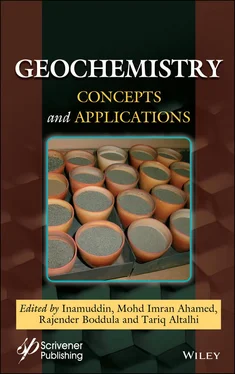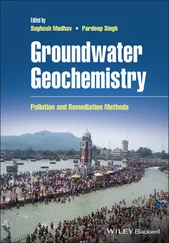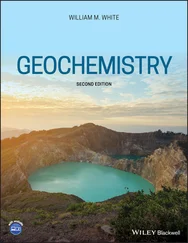111 River Street, Hoboken, NJ 07030, USA
For details of our global editorial offices, customer services, and more information about Wiley products visit us at www.wiley.com.
Limit of Liability/Disclaimer of Warranty
While the publisher and authors have used their best efforts in preparing this work, they make no representations or warranties with respect to the accuracy or completeness of the contents of this work and specifically disclaim all warranties, including without limitation any implied warranties of merchant-ability or fitness for a particular purpose. No warranty may be created or extended by sales representatives, written sales materials, or promotional statements for this work. The fact that an organization, website, or product is referred to in this work as a citation and/or potential source of further information does not mean that the publisher and authors endorse the information or services the organization, website, or product may provide or recommendations it may make. This work is sold with the understanding that the publisher is not engaged in rendering professional services. The advice and strategies contained herein may not be suitable for your situation. You should consult with a specialist where appropriate. Neither the publisher nor authors shall be liable for any loss of profit or any other commercial damages, including but not limited to special, incidental, consequential, or other damages. Further, readers should be aware that websites listed in this work may have changed or disappeared between when this work was written and when it is read.
Library of Congress Cataloging-in-Publication Data
ISBN 978-1-119-70997-8
Cover image: Pixabay.Com
Cover design by Russell Richardson
Set in size of 11pt and Minion Pro by Manila Typesetting Company, Makati, Philippines
Printed in the USA
10 9 8 7 6 5 4 3 2 1
Geochemistry is a branch of earth science. Since it is a field of study that uses the tools and principles of chemistry to explain the mechanisms in geologic environments, it often focuses on determining processes that control the abundance and composition of minerals and their distribution in the earth’s crust. Geochemistry also plays a vital role in environmental soil and water systems in identifying and modulating environmental problems, and in studying the composition, structure and processes of the earth. Therefore, this book helps in understanding the chemical composition of the earth and its applications. Since it explores the basic principles, concepts and applications of geochemistry and discusses its beneficial effects, bottlenecks, solutions, and future directions, it will be a very helpful reference source for undergraduate and postgraduate students, geochemists, environmentalists, chemists, researchers, engineers, R&D professionals, and faculties who are working in the fields of earth science, environmental chemistry and industrial technologies among others. In addition to case studies, topics such as chemical weathering, impacts on living beings and water, geochemical cycles, oxidation and redox reactions in geochemistry, isotopes, analytical techniques, medicinal, inorganic, marine, atmospheric, and environmental applications are presented. The information contained in the chapters summarized below was written by experts in the field from around the world, making it a unique archival reference guide.
Chapter 1discusses the nature and occurrence of toxic geogenic contaminants in serpentinite geological systems. Human exposure pathways in occupational and non-occupational settings are then summarized and their human health risks are also presented. Finally, mitigation measures to reduce human health risks are discussed and future research directions are proposed.
Chapter 2reports detailed information on the application of essential minerals for the treatment of human diseases, including dental problems, cancer, hypertension, cardiovascular diseases, and goiters. Special attention is also paid to the application of essential elements for the management of animal and plant diseases.
Chapter 3highlights the benefits of the application of geochemistry in livestock, especially in the adequate maintenance of animal health and animal nutrition. The significance of numerous minerals that play several roles in the effective production of livestock is especially highlighted.
Chapter 4provides detailed information on the significance of geochemistry in the identification of useful mineral elements which could boost agricultural production and their significant role in the decontamination of heavily polluted soil and water, as well as their benefits especially in the area of sustainable agriculture.
Chapter 5details the cases of heavy metal contamination in soil using the ecological risk index. The major focus is the geochemistry and environmental impacts of arsenic, cadmium, chromium, copper, lead, nickel and zinc. The transfer of contaminants from sources to the higher trophic levels of the food chain is also summarized.
Chapter 6discusses the geochemical applications of both traditional and non-traditional stable isotopes. Beginning with basic definitions, the chapter goes on to discuss the variety of applications of traditional stable isotopes, geothermometers, tracers in hydrological and biological systems, ore deposits, hydrothermal systems, etc., and some applications of non-traditional stable isotopes.
Chapter 7is an overview of the research outcomes of the last decades and how geochemistry affects the sustainability of the environment and causes pollution at different levels. This chapter also explains the geochemical reactions of environmental pollutants and the physicochemical characteristics of various types of environmental samples.
Chapter 8focuses on the development of geochemistry and its distinct branches, as isotopic geochemistry reveals information about environmental health to avoid harmful chemicals that have antagonistic effects on health. Also discussed is the role of medical geochemistry in addressing many environmental health problems.
Chapter 9discusses the importance of inorganic geochemistry, the rock-forming minerals and their compositions. The characterization of minerals, elemental analysis and the determination of composition are elaborated. Clay minerals and their applications are also explained.
Chapter 10discusses the periodic properties such as ionization energy, electronegativity, electron affinity and influence on the chemical bond formation among the elements. The distribution of elements in different layers present on the earth which depends on factors like temperature, pressure and altitude are discussed. Several subdisciplines and the scope of geochemistry are also presented.
The EditorsFebruary 2021
1
Toxic Geogenic Contaminants in Serpentinitic Geological Systems: Occurrence, Behavior, Exposure Pathways, and Human Health Risks
Willis Gwenzi
Biosystems and Environmental Engineering Research Group, Department of Soil Science and Agricultural Engineering, University of Zimbabwe, Mt. Pleasant, Harare, Zimbabwe
Abstract
Serpentinitic ultramafic geological systems contain toxic geogenic contaminants posing significant human health risks. The current chapter presents an overview of the nature, occurrence, behavior, and human health risks of toxic geogenic contaminants in serpentinitic geological systems. The geogenic contaminants include toxic metals (Co, Cr, Fe, Mn, Ni, and Zn), chrysotile asbestos, and rare earth elements. Occupational exposure occurs via inhalation in mining, milling, sculpturing, engraving, and carving industries. Non-occupational exposure include inhalation, and ingestion of toxic geogenic contaminants in contaminated geophagic earths, wild foods, herbal medicines, and water. Human exposure risk factors in Africa include weak and poorly enforced occupational and environmental regulations, consumption of contaminated foods and water, and lack of health surveillance systems. The prevalence of geophagy, high dietary intake of iron coupled with genetic disposition also increases iron overload and its health risks among native Africans. The human health risks of chrysotile (e.g., asbestosis, cancers) and toxic metals and rare earth elements (e.g., oxidative stress) are summarized. Human health risks may also occur via synergistic interactions among toxic geogenic contaminants (e.g., chrysotile and toxic metals), and with other health stressors (e.g., infectious diseases). Finally, mitigation measures to safeguard human health and future needs are highlighted.
Читать дальше



